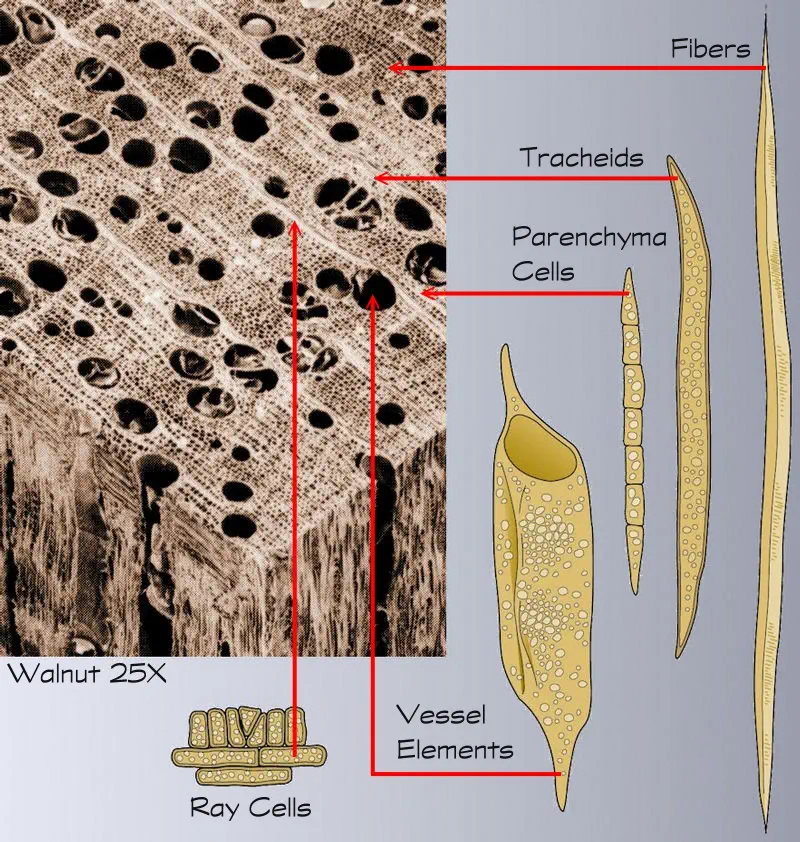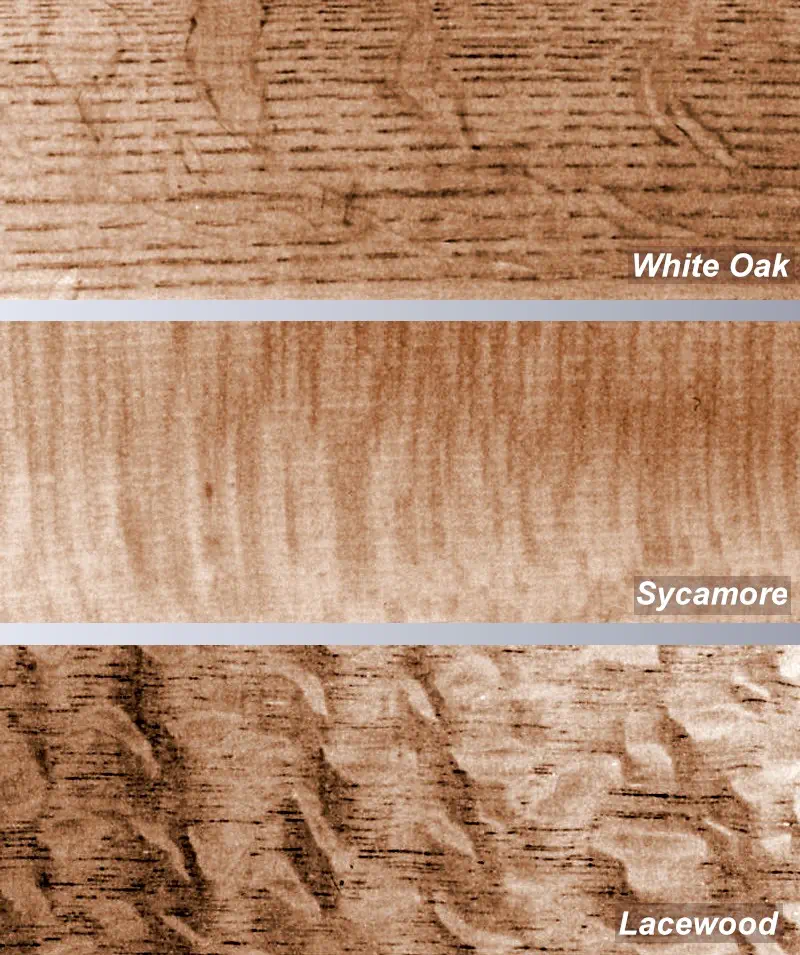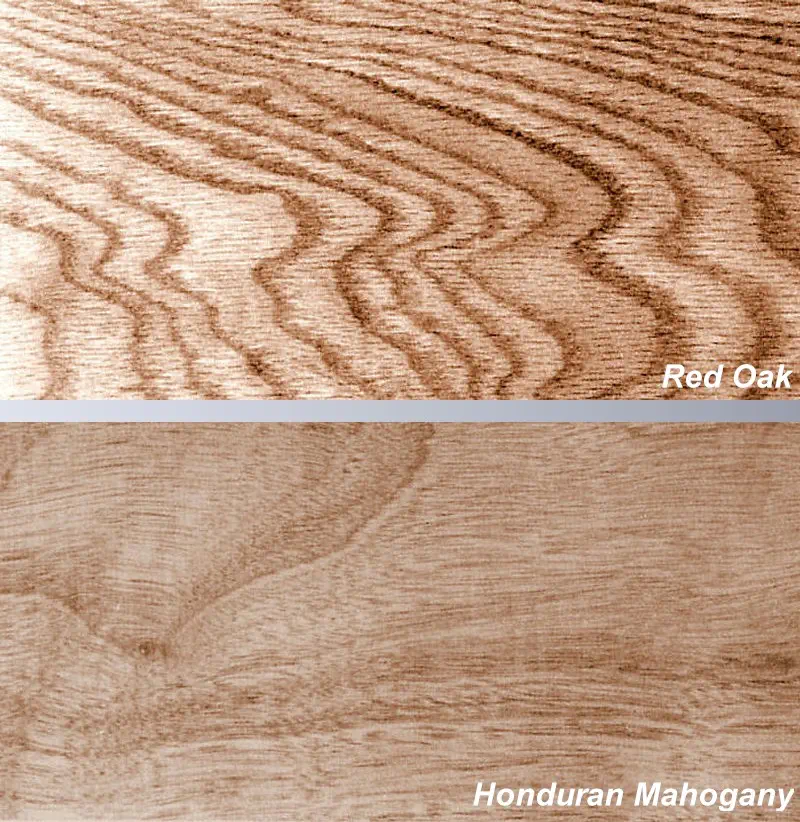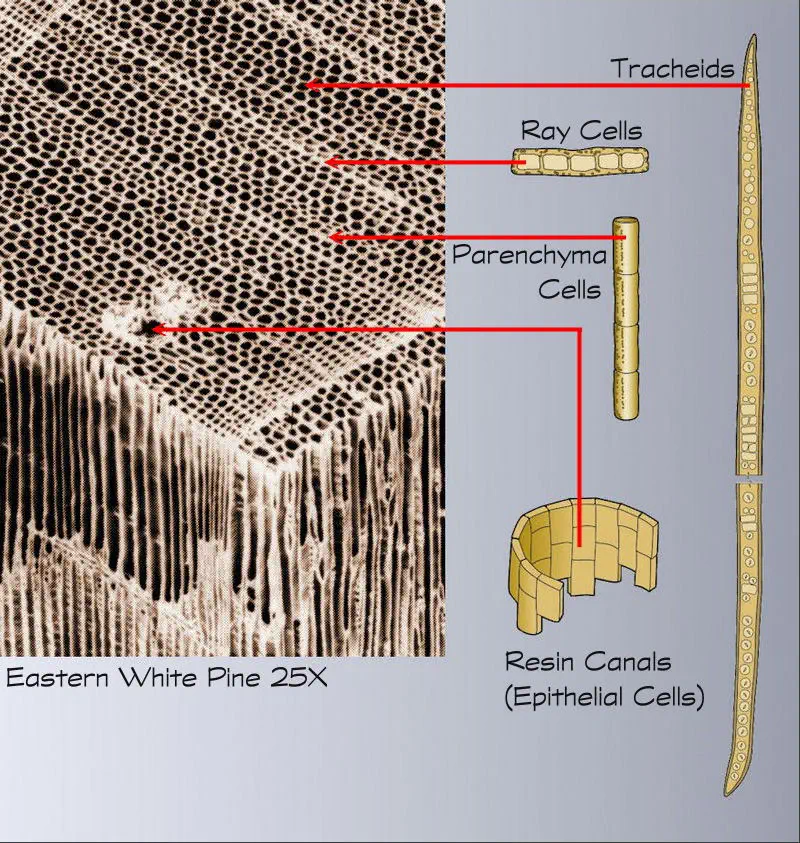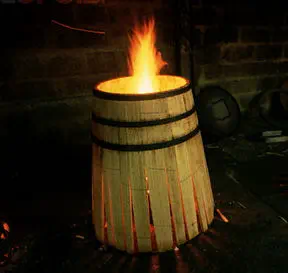Angiosperms
Hardwoods come from angiosperms, which means the plant seeds are encased in a “seed vessel” like a fruit or a nut. There are two types of angiosperms: monocots (such as palm and bamboo) and dicots (such as oak and rosewood). Almost all hardwoods come from dicots. Most dicots in temperate climates are deciduous, meaning they lose their leaves during winter dormacy. Dicots in warmer parts of the world don’t lose their leaves — at least, not all at once. So, contrary to the standard definition, not all hardwoods come from deciduous trees.
Gymnosperms
Softwoods come from gymnosperms, plants with naked seeds. As the seeds develop on the cones, they are not encased in any tissue. Within this botanical group, there is a subdivision of conifers, which are characterized by needle and scale-like foliage. All softwoods come from coniferous gymnosperms.
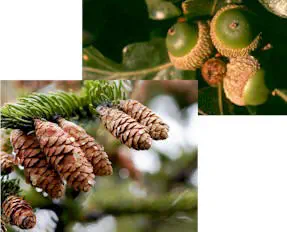
The distinguishing factor between hardwoods and softwoods is how the trees reproduce. Hardwoods grow from encased seeds (oak, top), softwoods from seeds arranged on cones (pine, bottom).


